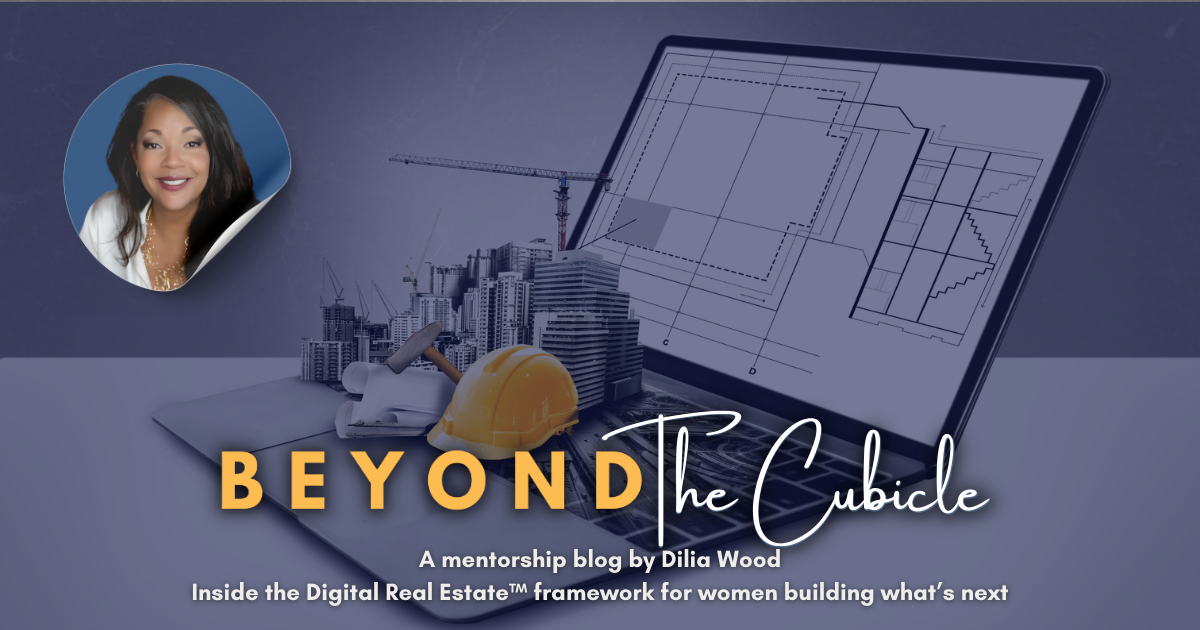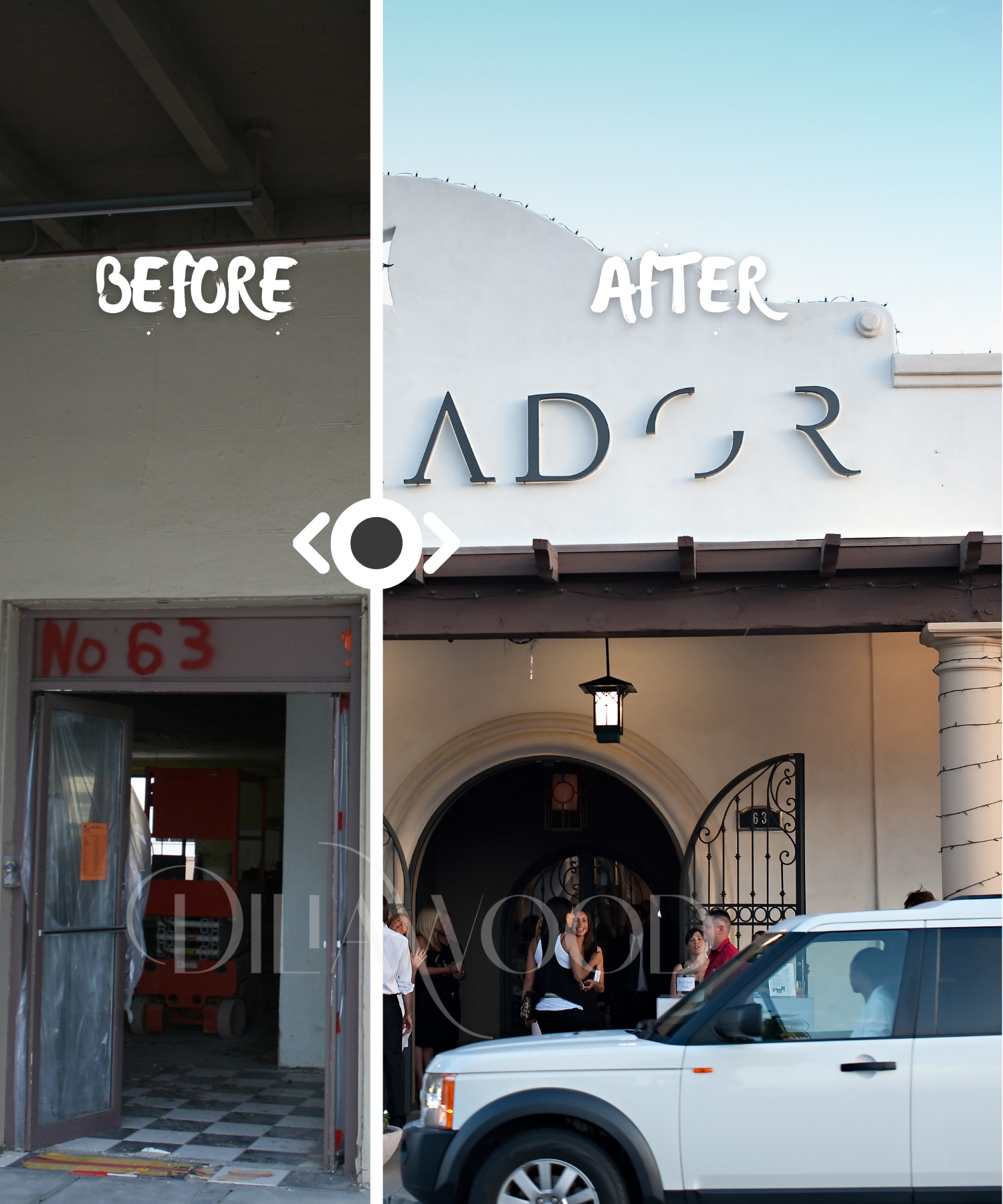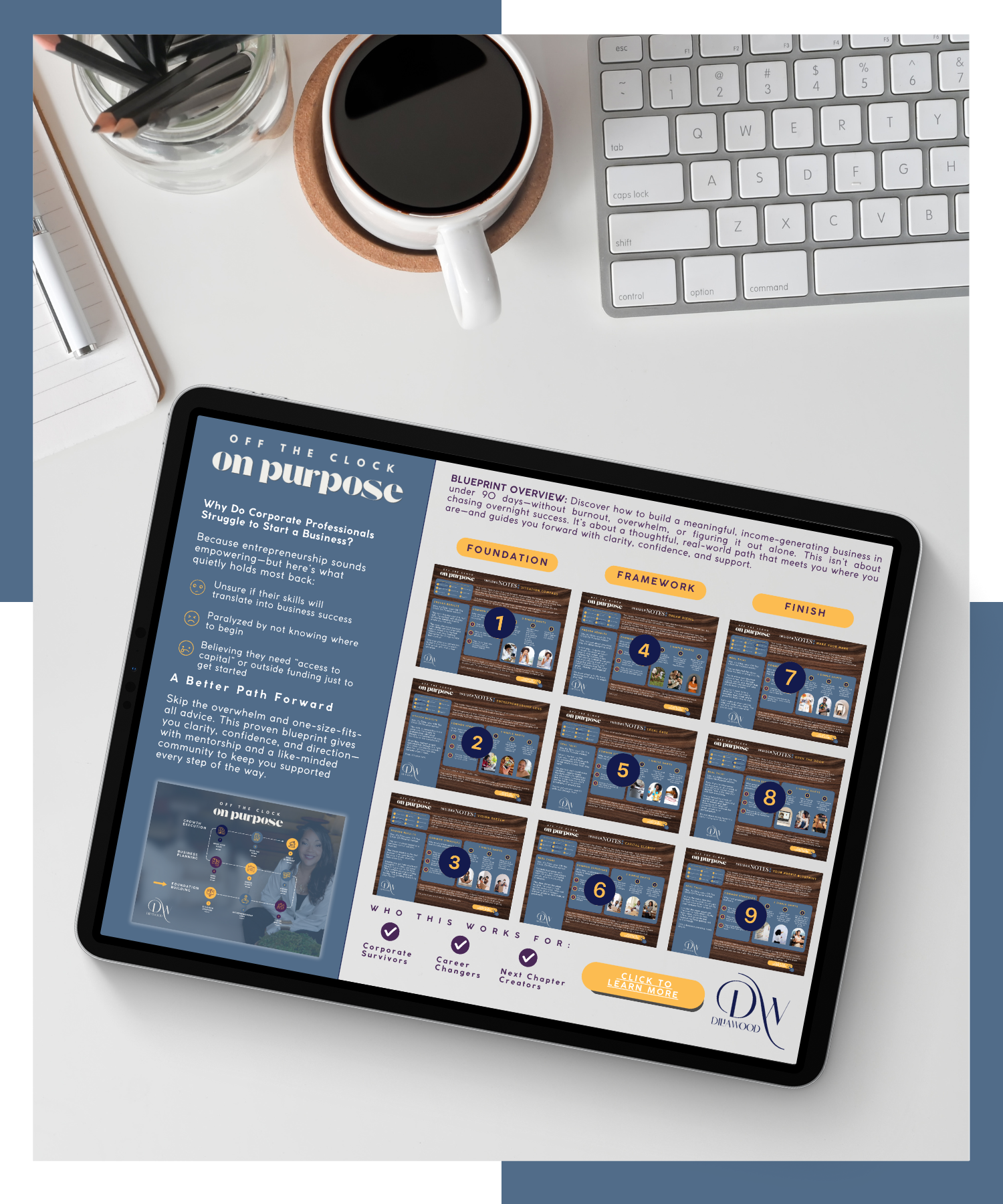STOP RENTING YOUR DREAM: The New Blueprint for Digital Entrepreneurship and Ownership
Most entrepreneurs are told to “build a brand.” But no one tells them who owns the land they're building on. This isn’t about trends—it’s about ownership, digital real estate, and a blueprint for women building online on their own terms.

Everyone tells you to “build a brand.”
But no one tells you what you're actually building—or who owns the land you're building on.
They’ll tell you to jump on social media and just be "authentic."
For some, that might actually work out.
For most, it will feel like screaming into the void.
After years of restoring brick-and-mortar buildings, working inside tech giants like Microsoft, and helping entrepreneurs start their own dream—I started seeing a pattern.
The digital world is a lot like Main Street.
But some of us? We’re still building like it’s a 1997 .com bubble.
A “set it and forget it” website.
Some “about us” copy.
A few links.
A logo.
Maybe a "Contact Us" form.
The Good News
There has never been a better time, in all of history, to start a business. We are certainly in a new tech era. And we have a narrow window of time where we can build like never before.
But here’s the truth: what used to work online won’t get us where we need to go today.
So I started testing a framework I call Digital Real Estate.
And what I’ve found?
Changes everything.
From Brick to Click: The Moment I Saw What No One Else Did
Back in the mid-2000s, I stood outside a boarded-up hardware store at 63 E Boston Street in Chandler, Arizona.
There was a porn shop on one corner. A dusty boot store on the other.
Behind me? The railroad tracks and a neighborhood most developers ignored.
It wasn’t a promising location.
It was a ghost town.
But I saw something: potential.
Over time, we turned that forgotten building into a place where people gathered. Not just a venue. But a center of gravity that thrives today under new ownership.

This is the same structure—same bones, same square footage—but rebuilt with intention. It didn’t just get new paint. It got a new purpose, a business model to support it, and a reason for people to show up. That’s exactly how I define Digital Real Estate™. Not just a website with your name on it, but an asset that functions, earns, and evolves—just like this building did.
It worked because we built it intentionally. From the ground up. With a business model that fit the place, the people, and the long game.
And now? I use the same lens, only this time, it’s digital.
Because most of what’s being built online today?
It’s leased.
It’s fragile.
And it’s not built to last.
What Is Digital Real Estate?
Digital Real Estate is a long-term digital asset infrastructure designed to generate revenue, retain value, and scale with purpose. It is an ecosystem you own, operate, and evolve. This is not a single website or a social media presence, but a set of interconnected platforms that function together as your business foundation.
This framework is rooted in the same principles I mastered as a commercial real estate developer. In the physical world, I have worked with land, buildings, zoning boards, and full-scale restorations. The goal was always to create value that would outlast its builder. I bring that same thinking into the digital space.
When I talk about digital real estate, I am referring to websites, email lists, content libraries, automations, digital products, and brand systems that can function with or without your daily involvement. These components are designed to work in sync. They are not tied to algorithm shifts or reliant on constant posting to remain effective.
Each part of the system plays a defined role.
Your website acts as the storefront. Your content builds reputation. Your email list becomes a channel of direct connection. Your blog or Substack invites conversation and deeper context. Social media operates as outreach and signal amplification, but it is never the home. That distinction matters more now than ever.
The value of digital real estate is not just in owning these assets. It comes from knowing how to operate, maintain, and improve them over time. That includes content structure, user experience, monetization strategies, back-end integrations, and market adaptability. When a platform changes, a builder should be able to adjust without starting from scratch.
Most small business owners are not given this level of strategy. They receive fragments: a logo, a website, maybe a funnel. But without a cohesive plan, what gets built often looks complete but cannot hold weight. When something breaks, there is no map for how to fix it. The system stalls, and momentum disappears.

How This Framework Is Being Tested in Real Time
To prove there is a better way, I am documenting my own digital ecosystem from the inside out. Over the next 100 days, I will be creating, refining, and sharing the strategy, decisions, and systems I use. This is not content for performance. It is practical insight, shared with intention. Everything I publish publicly is part of a broader teaching framework designed to support and guide the entrepreneurs I mentor.
Inside a private mentorship space I call The Neighborhood, a small group of entrepreneurs is applying this framework to their own businesses. They are learning to think and operate like developers of long-term value. Their work is deliberate, strategic, and rooted in ownership. Each person is building a system designed to generate income, maintain relevance, and provide true flexibility. This blog, along with everything I share across platforms, offers a working demonstration of that process. It is a visible layer of the larger foundation we are building together.
This blog is part of that process. It is one of the properties within the ecosystem. The purpose is not just to share ideas. It is to demonstrate the mechanics of what long-term, sustainable digital ownership actually looks like.
Digital real estate is not branding. It is not personality-driven content. It is a strategic asset. Like any valuable property, it takes vision, investment, and discipline to build. But unlike physical real estate, it is accessible. You do not need a gatekeeper. You need a blueprint. And that is what I am offering—one build at a time.
Why So Many Founders Feel Stalled (Even When They’re Doing Everything “Right”)
Most entrepreneurs know how to drive.
They know how to post, promote, and show up online.
But when the platform shifts...
When engagement drops, reach disappears, or sales dry up overnight...
They stall.
Not because they’re lazy. But because no one ever showed them what’s under the hood.
No one taught them how the ecosystem really works. How to troubleshoot when the algorithm changes. How to diagnose what's broken, and fix it without burning it all down.
The truth?
The .com playbook expired years ago. We’re not building tri-fold brochure websites in 2025. We’re building ecosystems with automation, monetization, and long-term equity.
And if you don’t understand what you’re actually constructing? You’ll spend your time polishing the hood while the engine dies underneath.
What We're Doing Differently
I’m using myself as the guinea pig.
Not to show you perfect highlight reels, but to give you a front-row seat to the real decisions, experiments, and pivots that shape a business from the inside out.
This isn’t about building a website.
It’s about building a business that can live, grow, and earn online. Without burning you out.
This build lab was designed especially for:
- Introverts who want strategy, not spotlight
- Women transitioning from corporate into ownership
- Creators who’d rather build quiet ecosystems than chase trends
- Entrepreneurs who want clarity and control before they go “all in”
Inside the process, you’ll see:
- The tools I’ve vetted (and how I use them)
- My strategy for building content as equity, not just visibility
- How to build platforms you own, so you're not at the mercy of the algorithm
- How we test mentorship, automation, and monetization as part of modern entrepreneurship for women
Sweat equity is the seed.
Content is the compound interest.
And community? That’s the moat.
The Long Game: Ownership, Capital, and the Bigger Picture
I’ve built real businesses without ever needing a personal brand. But this time, I’m doing it publicly. Not for attention, but to prove a point:
This is a new era of entrepreneurship.
Digital. Decentralized. Values-driven. Resilient.
We’re not building to impress. We’re building to own.
We’re not building followers. We’re building resonance and freedom.
This isn’t just marketing. It’s a blueprint for how women can build better on their terms.
So before you post another piece of content just to “keep up,” ask yourself:
Where am I building?
Who owns the land?
And is this leading to ownership, or just more noise?
And here's where it gets bigger than just us: When you support this work, whether through reading, subscribing, or joining the mentorship community, you’re also helping fund women building their own businesses around the world.
Through the power of Kiva.org, part of every premium membership supports microloans for women entrepreneurs in underserved communities.
Because access to capital shouldn’t be a luxury. It should be a starting point. We’re building local and global.
When you invest here, you help another woman take her first step. That’s the kind of entrepreneurship worth multiplying.
If this hits something in you, stay a while.
Start with The Builder’s Journal for deep dives, behind-the-scenes strategy, and tools you can actually use.
Want to follow the build in real time?
Come find me on Substack: No Cubicle No Cry.
This isn’t just content. It’s the next chapter of entrepreneurship for women—built with intention, ownership, and room to breathe.
I’m glad you’re here.
Let’s get to work.
—Dilia
